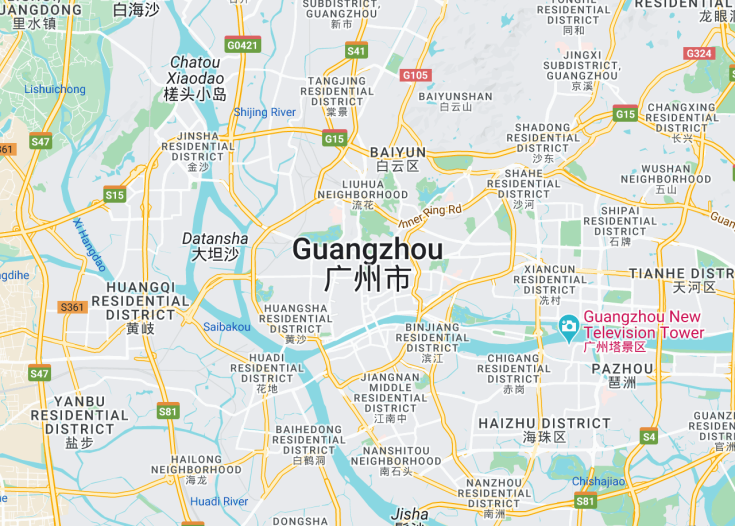Guangzhou, a vibrant metropolis in southern China, serves as a crucial hub of culture, commerce, and cuisine. Known historically as Canton, this sprawling city is famed for its architectural marvels, ranging from ancient temples to modern skyscrapers, and its significant role as a trading port. The local cuisine, notably Cantonese, invites gourmands globally to savor its authentic flavors. Guangzhou’s rich cultural tapestry is further adorned by its lush parks, bustling markets, and dynamic festivals, making it an attractive destination for those seeking a blend of tradition and modernity in their travels.
Before visiting Guangzhou, explore the concept of ‘Dim Sum’ and be ready to embark on a culinary adventure in traditional teahouses and bustling street markets.
When planning your trip, consider visiting during the cooler months from October to December for a more comfortable exploration of the city’s numerous outdoor attractions.
Top things to do & see in Guangzhou
Select the following sights and activities to discover best tickets and tours available in Guangzhou.
Guangzhou: A Bustling Metropolis with Cultural Depths
| Country | China |
| Time in Guangzhou | GMT+8 |
| Language spoken | Mandarin |
| Population | 15,309,148 (World Population Review) |
| Currency | Chinese Yuan (¥, CNY) |
| Airports |
|
Guangzhou, often referred to as the “Southern Gateway” of China, is a thriving hub of cultural, economic, and social activity. It boasts historical significance dating back over two millennia, offering a blend of traditional charm and modern sophistication. As one of China’s largest cities, Guangzhou is known for its busy markets, innovative industries, and world-class infrastructure. The city’s economic prowess is matched by its cultural heritage, seen in the Cantonese cuisine, music, and opera.
Where is Guangzhou?
Located in southern China, Guangzhou serves as the capital of Guangdong Province, situated near the Pearl River Delta.
Distances:
| Route | Distance by car (km) | Time by car (approx.) |
|---|---|---|
| Shenzhen to Guangzhou | 137 | 2 hours |
| Hong Kong to Guangzhou | 174 | 3 hours 10 mins |
| Beijing to Guangzhou | 2111 | 21 hours |
What is Guangzhou famous for?
Guangzhou is famous for its impactful economic development, Canton Fair, vibrant shopping districts like Shangxiajiu Pedestrian Street, and Cantonese cuisine including the celebrated dim sum.
History
Early Settlement and Qin Dynasty (214 BC)
The area now known as Guangzhou has a history that dates back to the Neolithic Age, but it became significantly recognized during the Qin Dynasty around 214 BC when it was established as an important regional port and a military outpost. This development marked the beginning of its prominence as a center of trade, particularly in silk, connecting it with the Silk Road.
Period of the Han and Tang Dynasties (206 BC – 907 AD)
During the Han Dynasty, Guangzhou intensified its role as a commercial port, further integrating into maritime trade routes. By the time of the Tang Dynasty, the city had blossomed into a cosmopolitan hub, drawing merchants from across Asia and even the Middle East, becoming one of the world’s earliest examples of a melting pot of cultures.
The Ming and Qing Dynasties (1368-1911)
In the Ming Dynasty, Guangzhou continued to be a critical trade port. By the Qing Dynasty, the city was designated as one of the key trading ports opening to Western merchants following the establishment of the Canton System in 1757. This era brought about significant architectural and cultural influences from the Western world, influencing local customs and the socio-economic landscape.
The Republic of China and Modern Era (1912-Present)
After the fall of the Qing Dynasty, Guangzhou became a focal point during major historical events in China, such as the uprising against the monarchy led by Dr. Sun Yat-sen in 1911. Throughout the 20th century, the city witnessed remarkable transformations, which helped to establish it as a major economic powerhouse in modern China, continuing to enhance its infrastructure and global connections into the 21st century.
Visit Guangzhou
Attractions and Activities in Guangzhou
Guangzhou, a vibrant metropolis, offers a blend of historical and modern attractions. Key sites include the Canton Tower, standing as an iconic symbol of the city’s skyline, and the ancient Chen Clan Ancestral Hall, showcasing traditional Chinese architecture and art. Visitors can explore the rich offerings of the Guangzhou Museum, situated within the stunning Zhenhai Tower.
- Yuexiu Park: Largest park in downtown Guangzhou, home to the Five Rams Statue and Zhenhai Tower.
- Shamian Island: Offers a picturesque view with its historical European-style buildings.
- Chimelong Tourist Resort: Ideal for families, this large-scale recreational area includes a theme park, water park, and a safari park.
Festivals and Events in Guangzhou
Guangzhou hosts numerous cultural and modern events throughout the year that reflect its rich heritage and vibrant community life. The Guangzhou International Dragon Boat Festival, held annually in June on the Pearl River, is not to be missed. Another significant event is the Canton Fair, China’s largest trade fair held biannually in April and October, attracting business visitors worldwide.
Best time to visit Guangzhou
The best time to visit Guangzhou is during autumn, from October to December, when the weather is comfortably cool and dry, making it ideal for exploring the city’s numerous outdoor attractions and events.
Is Guangzhou worth visiting?
Guangzhou offers an intriguing mix of traditional culture and modern dynamics, making it a compelling destination for travelers. The city’s rich history, combined with its modern skyline and extensive culinary offerings, provide a fascinating experience. However, visitors should be prepared for the humid climate and bustling urban environment, which might be challenging for some. Nevertheless, for those interested in experiencing a bustling metropolis that bridges the old with the new, Guangzhou proves to be a worthwhile visit.










